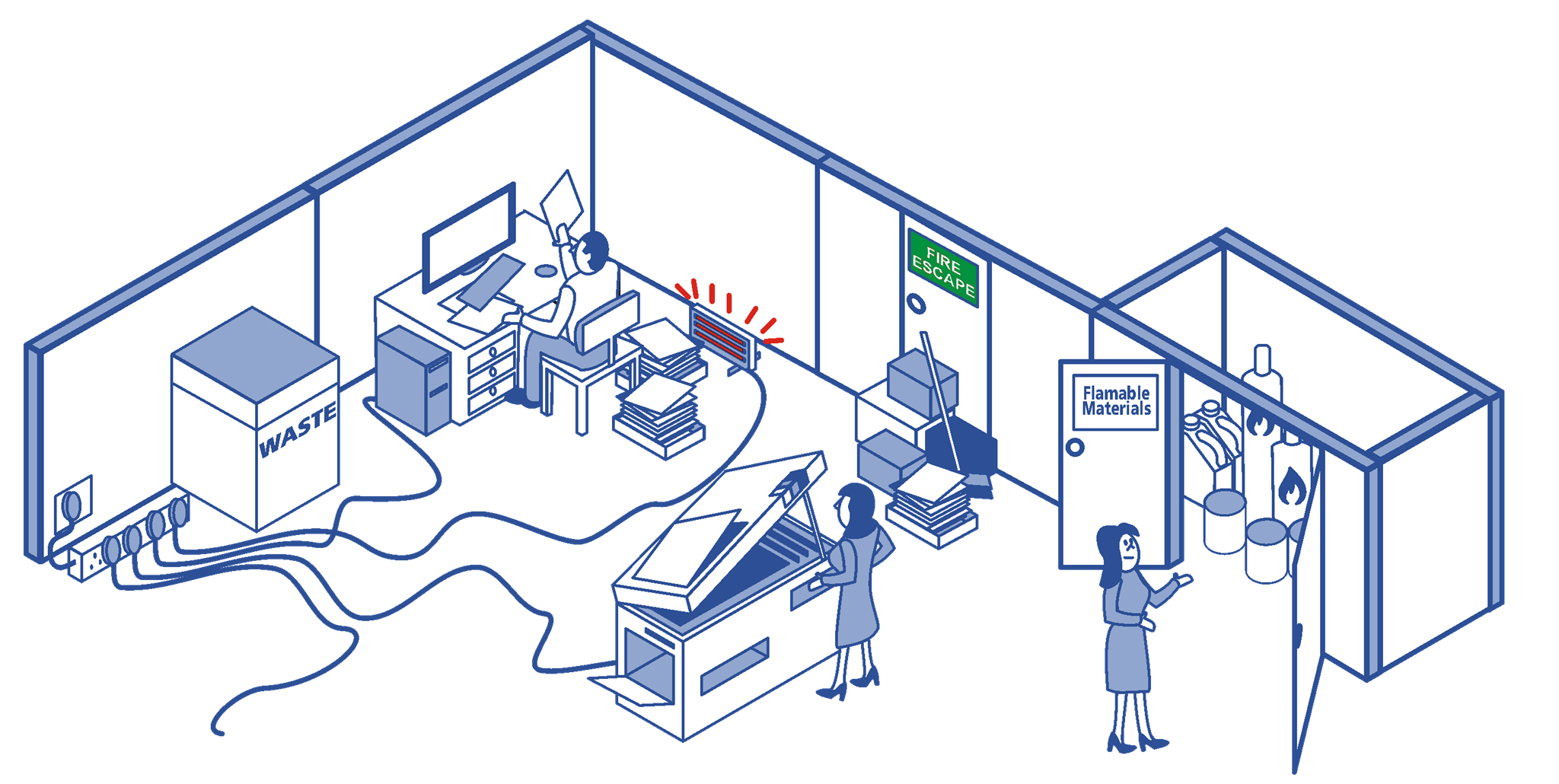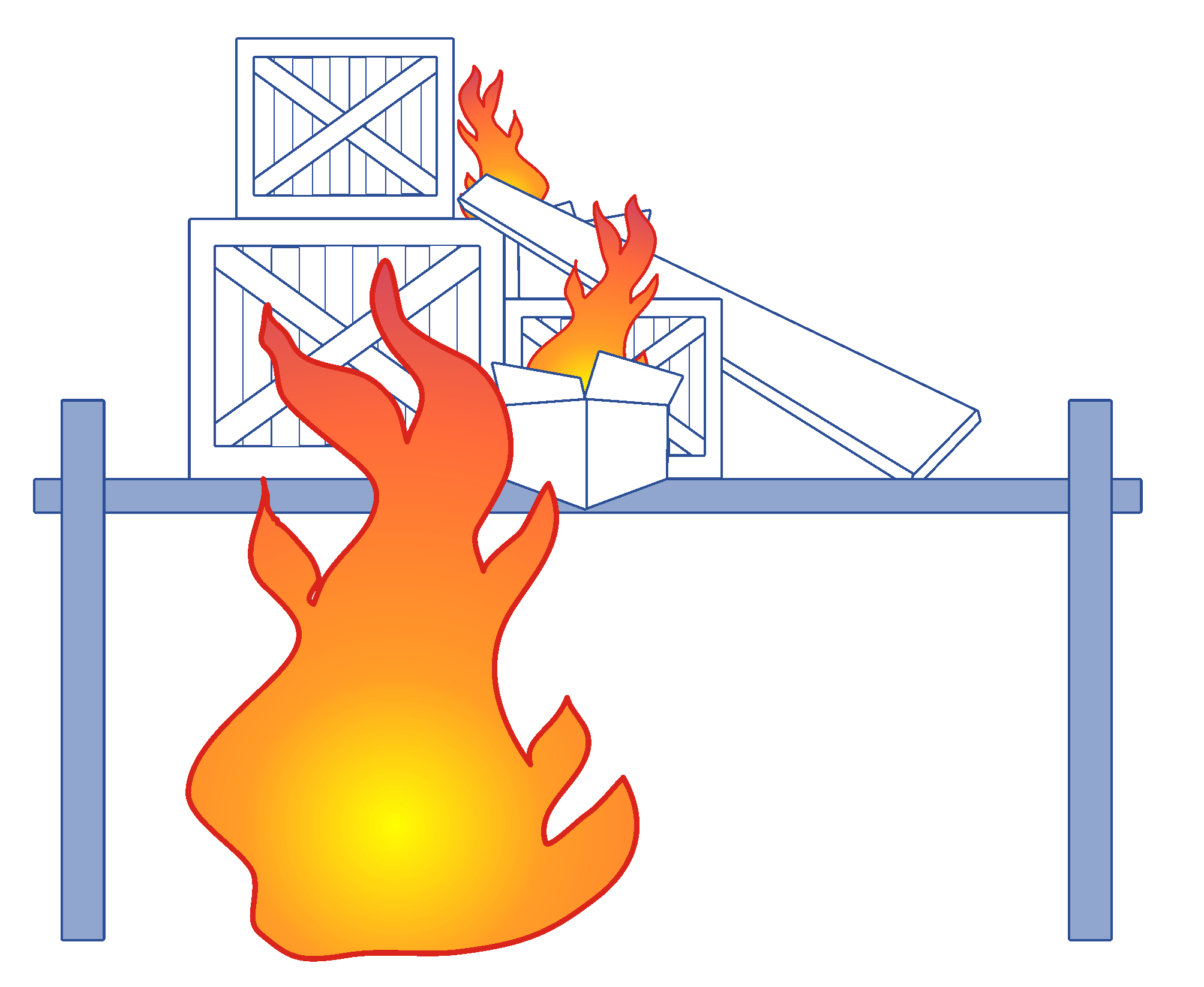2. Blocked escape routes:
Cluttered areas can obstruct emergency exits, making it difficult to escape in a fire. Objects blocking doorways or hallways can impede your ability to reach safety quickly. It is crucial to keep these areas clear and free from any obstructions.
3. Ignition sources:
Poor housekeeping can accumulate dust, debris, and other flammable materials near potential ignition sources, such as electrical outlets or machinery. These factors are common causes of fire.
4. Inadequate maintenance:
Neglecting regular maintenance tasks like cleaning chimneys or vents can result in the buildup of flammable substances like creosote or lint, which can ignite and cause a fire. It is important to schedule regular maintenance checks and cleanings to prevent such hazards.
5. Improper storage of chemicals:
Storing hazardous materials incorrectly can also lead to fire hazards. According to their specific safety guidelines, chemicals should be stored in designated areas, away from heat sources. Failure to do so can result in chemical reactions or accidental spillages that may trigger a fire.
6. Smoking hazards:
Disposing of cigarette butts inappropriately or smoking near flammable materials can increase the risk of fire in a safe house. Smouldering cigarette butts can easily ignite nearby objects, especially if they are not properly extinguished. It is essential to have designated smoking areas with proper ashtrays and enforce strict smoking rules near flammable materials.
7. Lack of fire prevention measures:
Inadequate installation or maintenance of fire prevention equipment, such as smoke detectors, fire alarms, and sprinkler systems, can leave a safe workplace vulnerable to fires. These devices are crucial in alerting occupants and suppressing fire outbreaks before they escalate. Regular inspections and testing of these fire safety measures by a competent person are essential to ensure their effectiveness.
8. Electrical hazards:
Faulty wiring, overloaded circuits, and outdated electrical systems can pose significant fire risks. It is important to have a professional electrician inspect the electrical system of a safe house regularly to identify any potential hazards and make necessary repairs or upgrades.
9. Carelessness in the kitchen:
Cooking-related fires are a common cause of workplace fires. Leaving cooking appliances unattended, using flammable materials near stoves or ovens, or forgetting to turn off burners can quickly lead to a hazardous situation. Always stay vigilant while cooking and practice proper kitchen safety, such as never leaving a heat source unattended and keeping flammable materials separate. It is also essential to have a fire extinguisher readily available in the kitchen and to know how to use it effectively.
10. Neglecting maintenance of heating equipment:
Furnaces, space heaters, and other heating devices require regular maintenance to ensure their safe operation. Failure to clean or inspect these appliances can result in the buildup of flammable materials or the malfunctioning of critical components, increasing the risk of fire. It is crucial to schedule regular inspections by a qualified technician and follow manufacturer recommendations for maintenance and cleaning. Additionally, it is essential to use heating equipment responsibly, such as keeping flammable objects at a safe distance and never leaving heaters unattended.
The role of regular fire awareness training in the workplace
Fire awareness training, conducted on a regular basis, plays a crucial role in promoting safety and preparedness in the workplace. By providing employees with the knowledge and skills to identify potential fire hazards, respond effectively in an emergency, and adequately use firefighting equipment. Organisations can significantly reduce the risk of workplace fires and ensure the safety of their workforce.
Fire safety training covers appropriate fire safety measures. These include understanding fire behaviour, recognising common fire hazards, implementing evacuation procedures, and using equipment such as fire extinguishers. Proper training empowers employees to take immediate action in a fire and helps them develop a proactive mindset towards fire safety.
Here at Commodious, we specialise in providing online courses that cover many aspects of Health and Safety at work in the UK. If you would like to learn more about the courses we offer for fire awareness and fire marshal/ fire wardens, click on the titles below:





